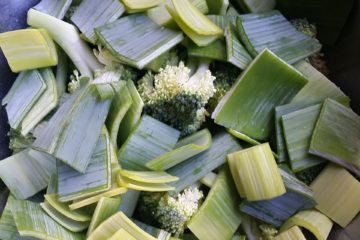Written by James Moy, Grant Writing and Development Intern
What is Cultural Appropriation?
Cultural appropriation is the adoption or assimilation of a culture’s characteristics, such as artistic forms, themes, or practices, in a way that does not recognize or respect the initial context or history of the people from which it originated. Many times, they become warped to fit qualities perceived to be“acceptable.” In the context of food choices, this can be exemplified as:
- Unequal representation of ethnic food services native to a specific area, but now used to bring in more revenue through false advertising (International corporations profiting off of native cultures)
- Incorporating ethnic stereotypes into restaurant descriptions or advertising
- Claiming certain ethnic foods as their own (The Taco being claimed to originate somewhere other than it actually was invented.)
Why Should We Be Concerned?
Cultural appropriation might seem like a sensitive subject, but for many consumers, cultural appreciation from our food choices may have a greater influence on our perspectives than we realize. Identifying the impacts that cultural appropriation can have on world/cultural views is essential to determining how we should confront negative social stereotypes and beliefs. Many of the current issues related to cultural appropriation in the food industry are linked to a lack of recognition or misleading labeling of culturally significant foods. Well-known food products sold at grocery stores fail to recognize the significance of ethnic culture on basic elements within the items they put on their shelf. Shoppers can easily overlook corporate marketing techniques that profit off of these marginalized groups’ ethnic foods without realizing what has happened.
Some examples of cultural appropriation in foods are blogs from chefs claiming ways to “elevate” ethnic dishes in a way that is more “appealing”. Not only do these claims disregard the value of authenticity in the foods they are making, but they also imply that the original should be less appreciated than their modified versions. By placing dishes into categories ranked by value, they are contributing to cultural appropriation, warping perceptions around the history and reverence of original food concepts.
Tips for Appreciation without Appropriation
When seeking out new ethnic cuisines, it is important to develop an open mindset around food appreciation. Food often has deep ties to the culture and people from which it originated. Many times the story of the dish has importance to the broader context in its meaning to the creators. Learning to educate yourself on specific ingredients, techniques, and meaning behind a chef’s work is respectful and builds a bridge between various ethnic meals and cultures.
Experiencing new foods should be viewed as a learning experience and a chance to gain insight into the lives and perspectives of people and their cultural heritage. Appreciation of all aspects of the cuisine leads to a greater understanding of the relationships between food, people, history, and place and connects people from different backgrounds on a deeper level.
How EGC’s Produce can respect cultural history
At Each Green Corner, we are continually searching for ways to expand the variety of produce options grown across all of our garden projects. Including different types of peppers can provide increased access to fresh fruits and vegetables helping to fight food insecurity. Grown in the ground in sun-exposed plots, the poblano pepper is one of the peppers EGC’s currently cultivates.
Poblano Peppers get their name from the state of Pueblo in Mexico, where they are believed to have originated. They are believed to have been grown and eaten in the Americas for centuries by Poblanos (the name that people refer to themselves by when they lived in the region) and at one point these peppers were even used as a form of currency. In some supermarkets, you will find them labeled as chile anchos (which is the traditional name for these peppers when dried). In Mexico, they are served dried, fried with whipped egg, stuffed, or used in salsas. They are skinny, are pointy at the tip, and are a mild variety of the chile pepper family, most similar to jalapeños. On the Scoville Heat Scale, they are about: 1,000 – 2,000, pretty Hot!
Planting poblano peppers can be a long and tedious process, but the end result is definitely worth the wait! Seeds should be planted indoors about 8-12 weeks before the last frost date. The seed tray must be placed in a warm, well-lit area such as on a windowsill. Keep the soil moist at all times, and within 2 weeks, seedlings should sprout. Once seedlings are about 2 inches tall, transplant each seedling to its own pot. Transplant them again in the garden once they are 5-6 inches in height, but be sure to harden them off for a couple of weeks first. Plant them in rich, well-draining soil, and in an area with full sunlight. Work in manure or compost. Some recommended companion plants include Marjoram (Sweet), Soy (Edamame), Burgundy, and Basil.
Poblano peppers contain about 25% of the recommended daily value of Vitamin B2 (riboflavin) which has been shown to reduce the risk of cancer. It is also a low-calorie food choice that can boost metabolism and help the human body to maintain a “lipid” profile. Poblano peppers also have a high concentration of vitamin A which is vital in maintaining a healthy immune system.
Poblano peppers have can be prepared in a variety of ways in the kitchen ranging from being dried, roasted, fried, stuffed, etc…
Authentic recipes for Poblano peppers:
Citations:
Alfaro, Danilo. “What Are Poblano Peppers?” The Spruce Eats, The Spruce Eats, 10
July 2020, https://www.thespruceeats.com/what-are-poblano-peppers-995741.
Accessed March 3, 2022
Childress, Catie. “Food Trends: The Cultural Appropriation of Foods.”
Soapboxie, Soapboxie, 12 Sept. 2016, https://soapboxie.com/social-issues/Food-Trends-The-Secret-Cultural-Appropriators.
Accessed March 4, 2022
“Innovating without Appropriation.” IFT,
https://www.ift.org/news-and-publications/digital-exclusives/innovating-without-appropriation.
Accessed March 4, 2022
Kuo, Rachel. “How to Appreciate Food without Being Culturally
Appropriative.” The Thirlby, The Thirlby, 2 Aug. 2019, https://www.thethirlby.com/thejournal/2019/7/31/how-to-appreciate-food-without-being-culturally-appropriative.Accessed Mar 5, 2022
McCann, Shana, et al. “The Cultural Appropriation of Food.” Solid Ground, 26
June 2020, https://www.solid-ground.org/cultural-appropriation-of-food/.
“Poblano Peppers – Beloved Mexican Pepper (All about Them).” Chili Pepper Accessed Mar 6, 2022
Madness, 28 June 2021, https://www.chilipeppermadness.com/chili-pepper-types/sweet-mild-chili-peppers/poblano-chili-peppers/.
https://post.healthline.com/wp-content/uploads/2020/01/hand_reaching_for_poblano_peppers-1200×628-facebook.jpgAccessed Mar 6, 2022



0 Comments